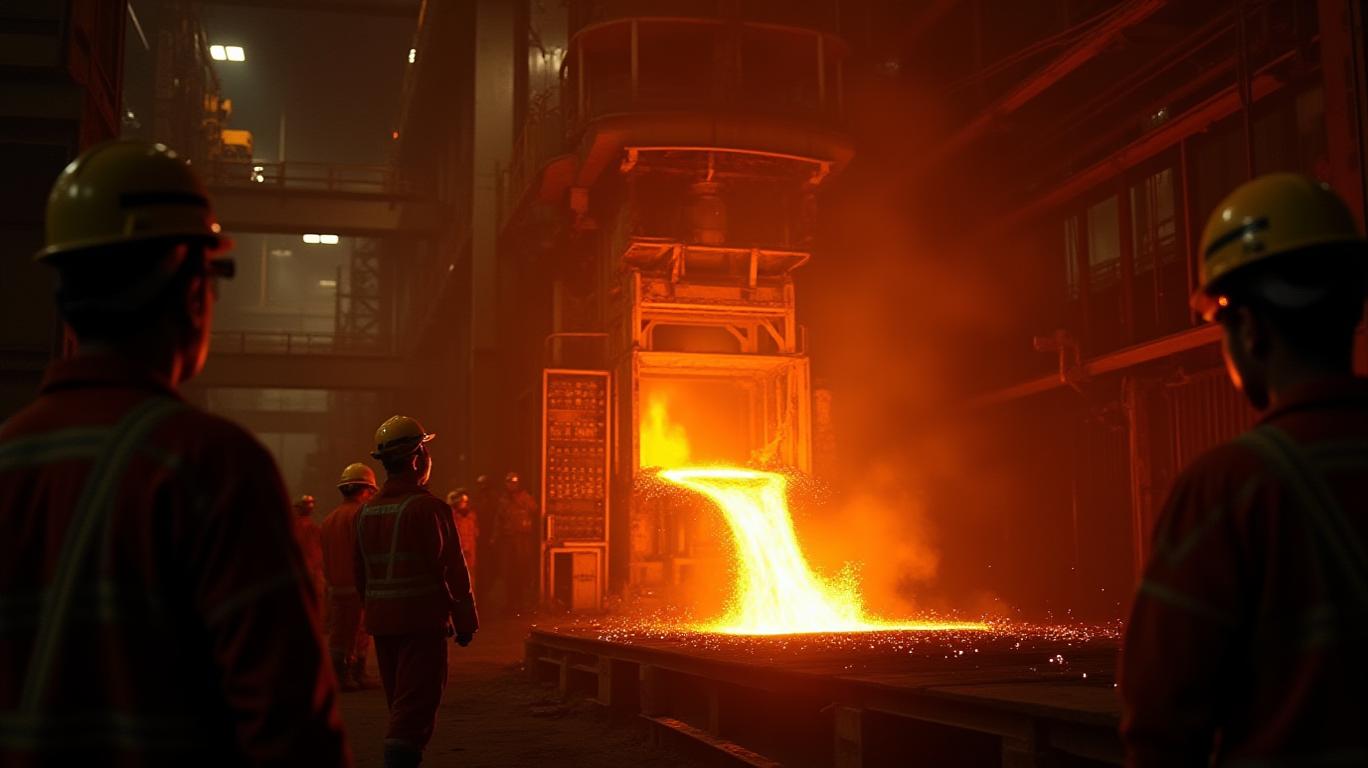JFE Holdings: Navigating Steel Sector Challenges Amid Declining Profits
Japanese steel giant JFE Holdings has long been a bellwether for
health, but its recent financials reveal the strain of a slowing economy. With a fiscal 2024 GAAP EPS of ¥138.24 and revenue of ¥4.86 trillion—both down sharply year-on-year—investors are scrutinizing the company’s ability to rebound in a post-pandemic world of rising costs and shifting demand.
The Profit Dilemma: Costs Outpacing Revenue
JFE’s fiscal 2024 (ended March 31, 2024) saw net profit plunge 53.5% to ¥91.8 billion, while revenue fell 6.1% to ¥4.86 trillion. The fourth-quarter results were particularly stark: a ¥8.23 billion loss versus a ¥34.4 billion profit in the same quarter a year earlier. A key culprit was the sales operating profit margin, which collapsed from 3.5% to 0.7%. Rising raw material costs, supply chain bottlenecks, and weaker demand for steel—from automotive to construction—have squeezed margins.
Strategic Shifts Under Pressure
To combat these headwinds, JFE has embarked on aggressive cost-cutting. The company slashed its annual dividend by 20% to ¥80 per share and announced the shutdown of a blast furnace in its Kurashiki plant to reduce excess capacity. These moves align with its “JFE Vision 2035” roadmap, which prioritizes decarbonization, automation, and high-value product development. However, the effectiveness of these measures remains unproven, as the global steel industry continues to grapple with overcapacity and China’s dominance in low-cost production.
The Dividend Cut: A Signal of Caution
The dividend reduction, the first in over a decade, underscores management’s focus on liquidity preservation. With net debt rising to ¥522 billion as of March 2024 (up from ¥417 billion a year earlier), JFE must balance shareholder returns with capital expenditure for sustainability initiatives. This cautious approach contrasts with peers like Nippon Steel, which maintained dividends despite weaker profits—a divergence that may signal JFE’s shorter-term financial fragility.
Outlook: Recovery Hinges on Global Demand
Investors will watch closely for Q1 2025 results, scheduled for August 5, 2025, to gauge whether the worst is over. Analysts are skeptical: consensus estimates for fiscal 2025 (ending March 2026) project net profit at ¥70 billion—just 76% of fiscal 2024’s already diminished figure. A recovery would require stabilization in key markets:
- Automotive sector: Global car production grew 3.2% in 2023 but faces a slowdown in 2024, per the International Organization of Motor Vehicle Manufacturers.
- Infrastructure spending: Japan’s public works budget rose 2.1% in fiscal 2024 but may stagnate as fiscal discipline tightens.
- Global steel prices: Down 12% year-to-date in Q2 2024 due to oversupply, per the Steel Index.
Risks and Opportunities
- Upside: JFE’s hydrogen-based steelmaking pilot plant (a cornerstone of its decarbonization strategy) could create a competitive edge if it lowers costs and meets regulatory targets.
- Downside: A prolonged economic slowdown in Asia could prolong the oversupply crisis. China’s steel output, already accounting for half the global total, shows no signs of contraction.
Conclusion: A Mixed Picture for Long-Term Holders
JFE Holdings is a compelling case study in resilience. Despite a 53.5% profit decline, its fundamentals remain intact: a strong balance sheet (current ratio of 1.2x), diversified customer base, and leadership in niche markets like automotive-grade steel. However, near-term risks—elevated debt, dividend cuts, and uncertain demand—suggest caution for short-term traders.
For long-term investors, JFE’s valuation offers an entry point: its price-to-book ratio of 0.9x is below its five-year average of 1.3x, and its price-to-earnings ratio of 12x is attractive if earnings stabilize. Yet success hinges on execution of its Vision 2035 plan and a cyclical rebound in global industrial activity. Until then, JFE remains a speculative bet on steel’s comeback.
Final Take: JFE Holdings offers a paradox—stable fundamentals versus uncertain near-term prospects. Investors should proceed with a long-term horizon, mindful of the risks, but prepared to capitalize on its undervalued position if the steel market recovers.

Comments
No comments yet